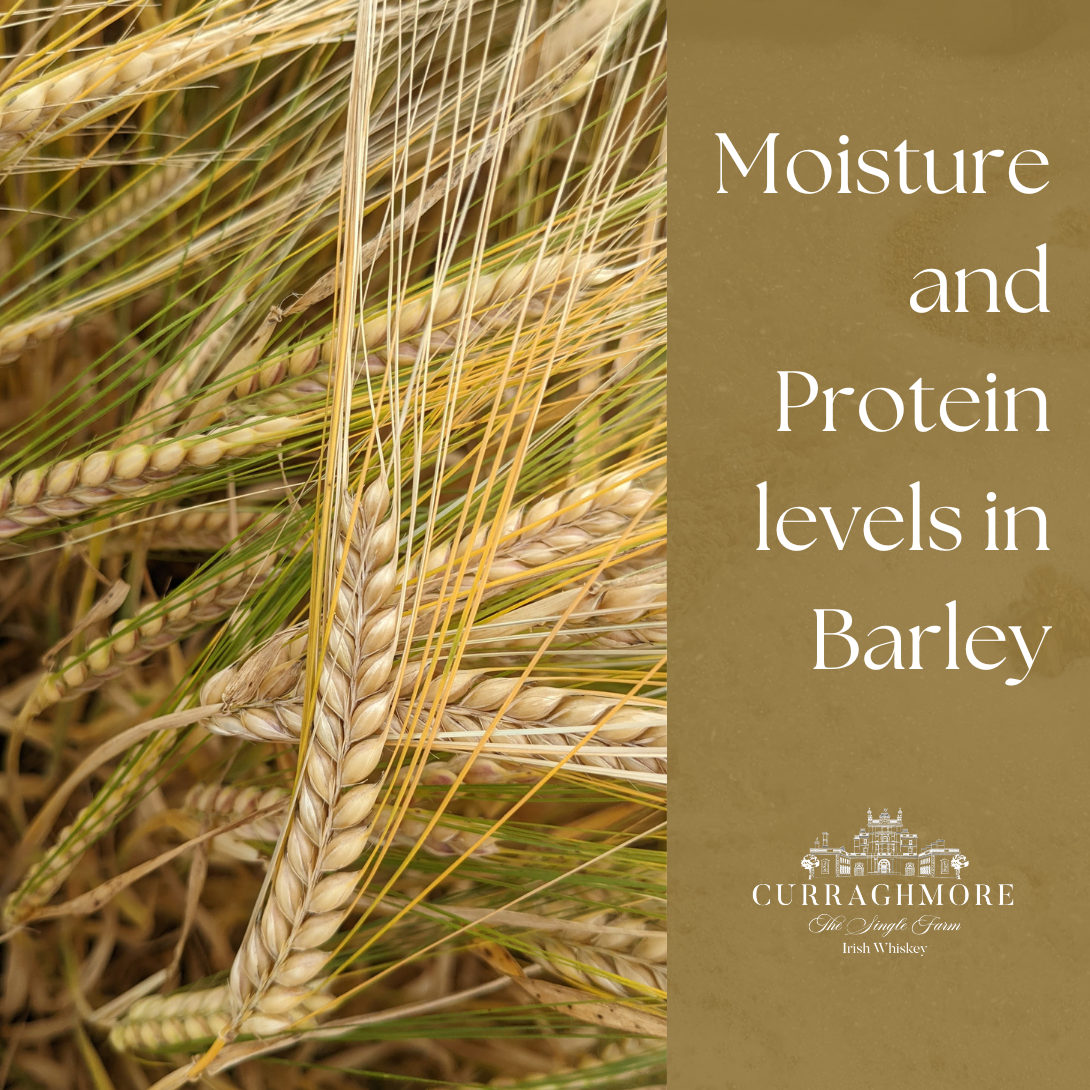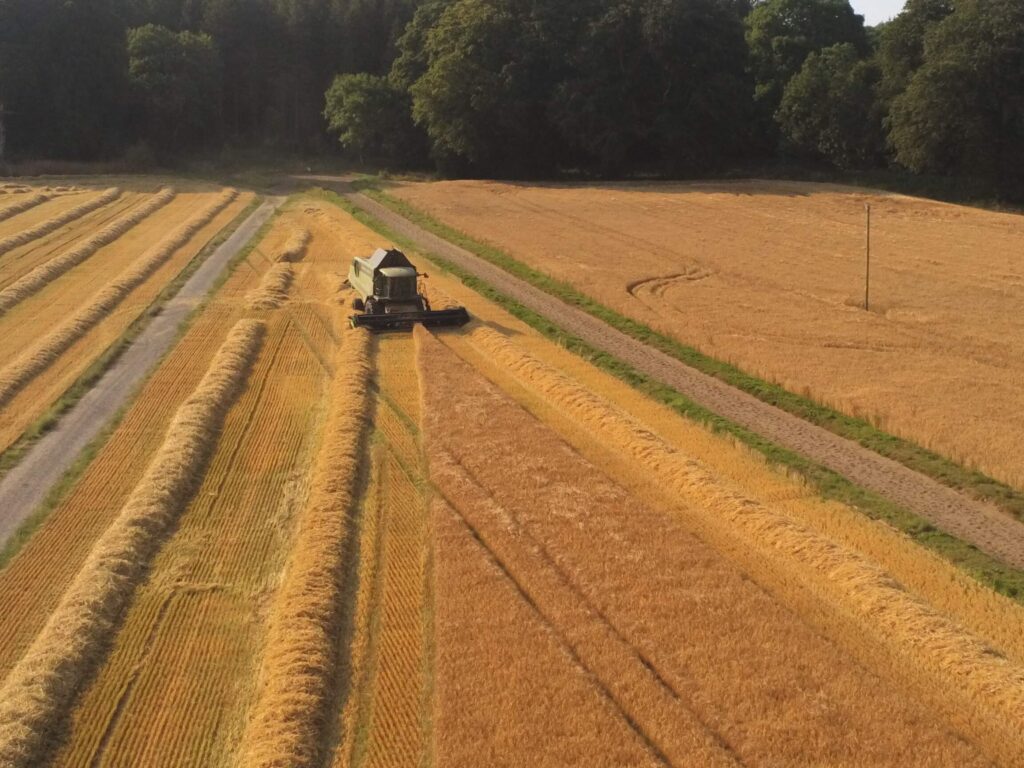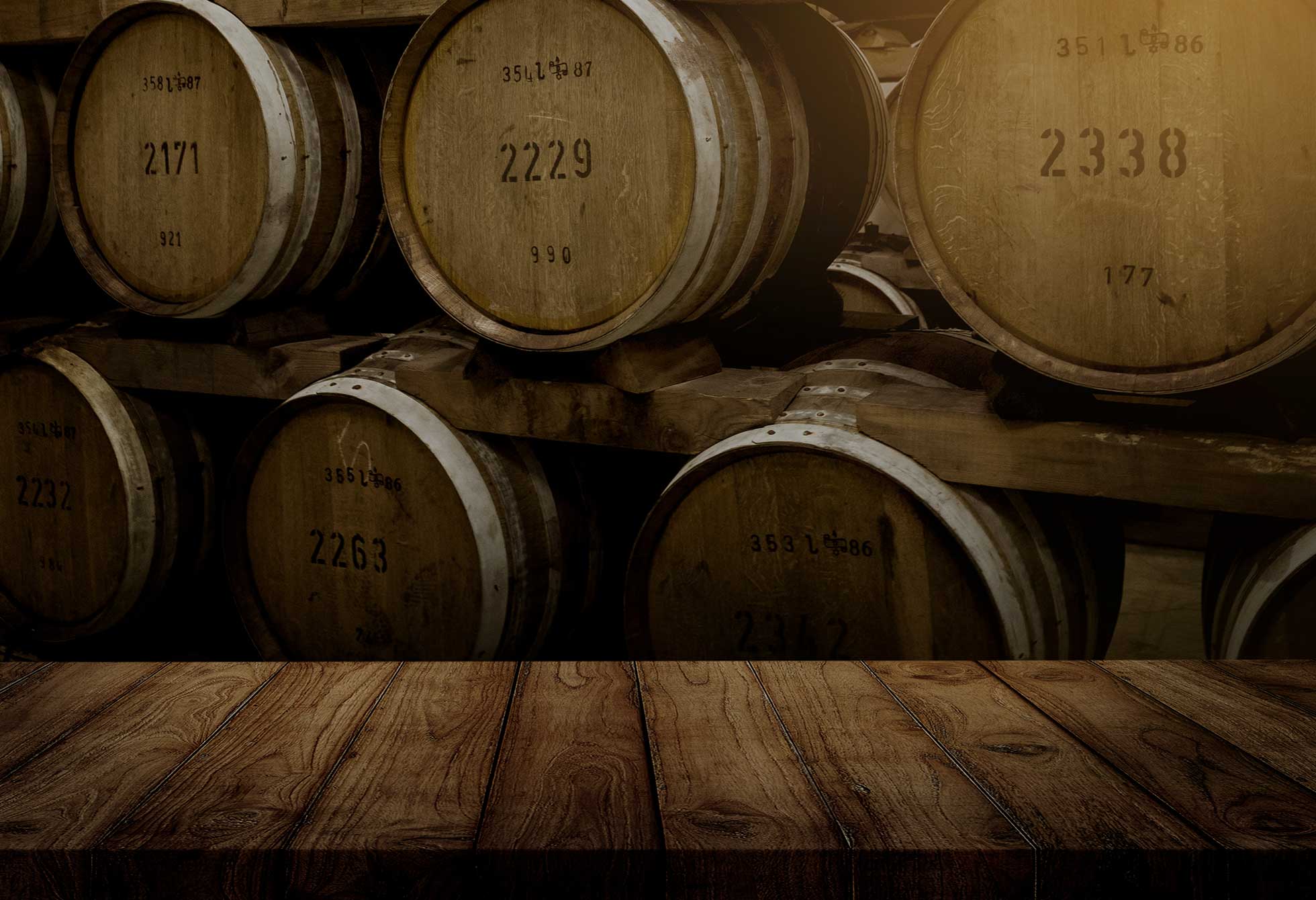
How moisture and protein levels in barley affect distillation
When malting barley is harvested, the moisture content in each grain will be around 15%, sometimes higher, depending on the conditions. The priority then is to dry the barley, to get the moisture level in the grain down to below 14%.
Why is this important?
Well, if you store barley with higher moisture content, you run the risk of barley deterioration. This will negatively impact the yield and quality at distillation. Moisture in the grain gradually reduces the ability of the seed to germinate in the next stage of the process, malting (see our blog post on malting here). Active respiration of the grain during storage will deplete the nutrition reserves that the seed uses to germinate or sprout. Moulds and diseases can also develop in high moisture conditions. If the grain continues to ‘respire’ or act alive, it will begin to sprout. This will result in quality reduction and even crop loss – you simply won’t be able to use the barley in distilling. The idea is to halt this process until such a time as we are ready to malt it. Drying the barley halts this process.

Barley Dryer
Drying barley is carried out in machines similar to a giant tumble dryer, and close readings are taken frequently to ensure the correct moisture level is achieved. Overdrying the barley is also to be avoided – it can be wasteful and lead to reduced returns.
So it’s a fine balancing act, keeping an eye on moisture levels to ensure they are at the right level. Even in storage, instruments are used to constantly monitor the moisture level in the grain, to ensure it’s kept consistently at the sweet spot – below 14%.
What about protein?
While high-protein barley would be desirable for feeding animals, a lower level is desirable for malting and distilling. The ideal protein content for malting barley resides between 10 and 12%, and too high or low a protein content can negatively affect malting quality and, therefore, distilling quality and yield. In general, a high protein content is undesirable, as there is a strong correlation between a high protein content and a low carbohydrate content, leading to a low extract yield. Basically the higher the protein levels, the lower the carbohydrate levels – which means the lower the alcohol levels – not ideal for whiskey making.
However, too low a protein level may lead to insufficient amino acids for yeast nutrition during the distilling process as well as low enzymatic activity, leading to a lower level of fermentable sugars and, therefore, a poor extract yield; also not ideal!
It’s a fine balance to maintain, and it takes serious expertise and experience to grow barley at these specific protein levels. The tillage farmer needs to time the harvest right so that conditions are optimal for the right protein level, and they can also add nitrogen to the crop to impact the level too. Protein levels can’t be changed after harvest, so it’s critical to get this right! We are very lucky to have Ned Morrissey as our Head of Tillage at Curraghmore, who brings a wealth of experience and skill to achieving these production standards!

Harvesting Barley in the Mayfield, Curraghmore Estate
Read more about the whiskey-making process here, and to become a Legacy Cask Member, click this link.




